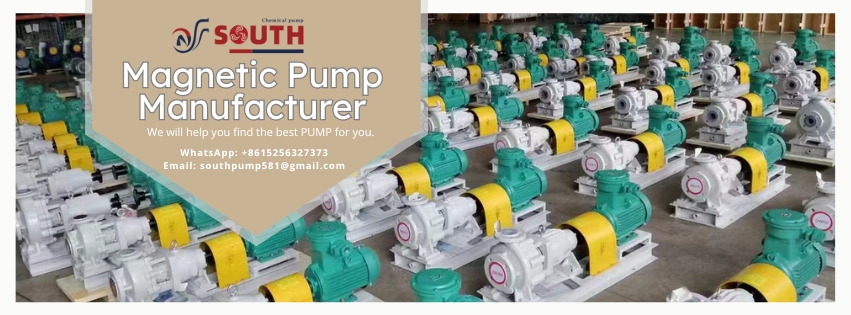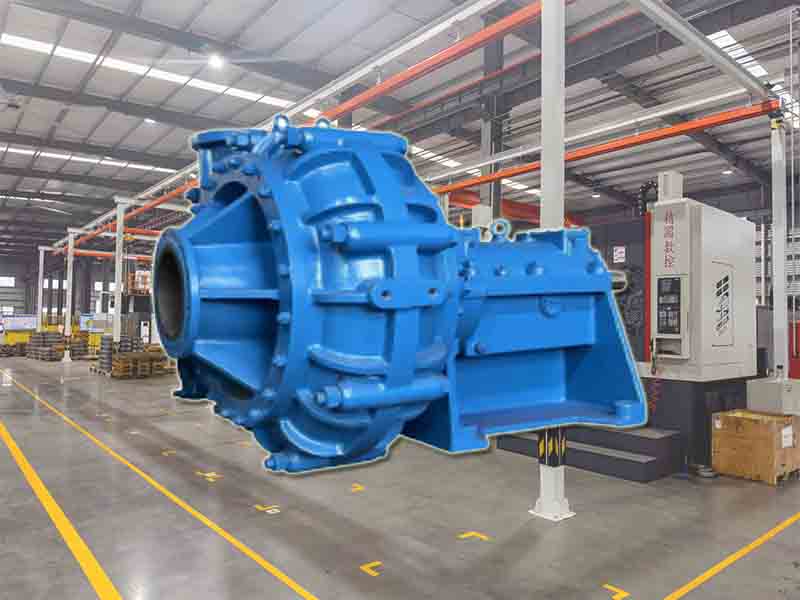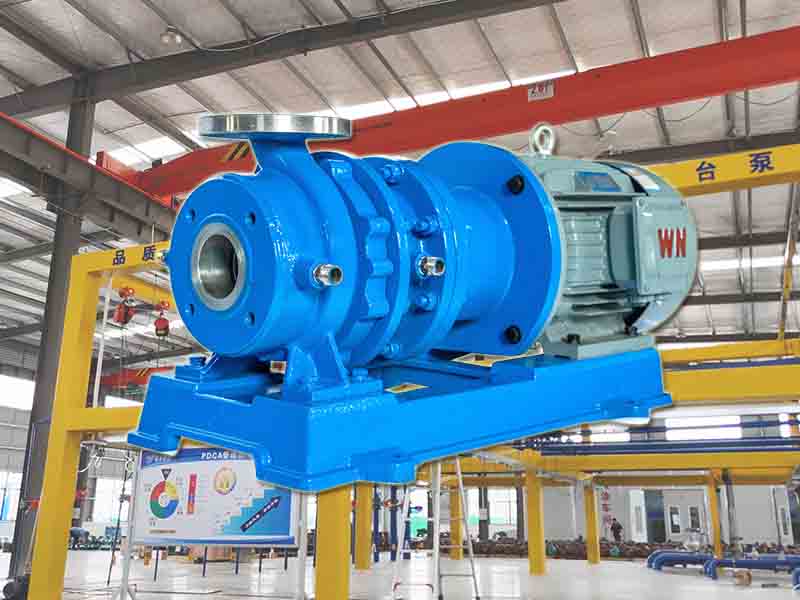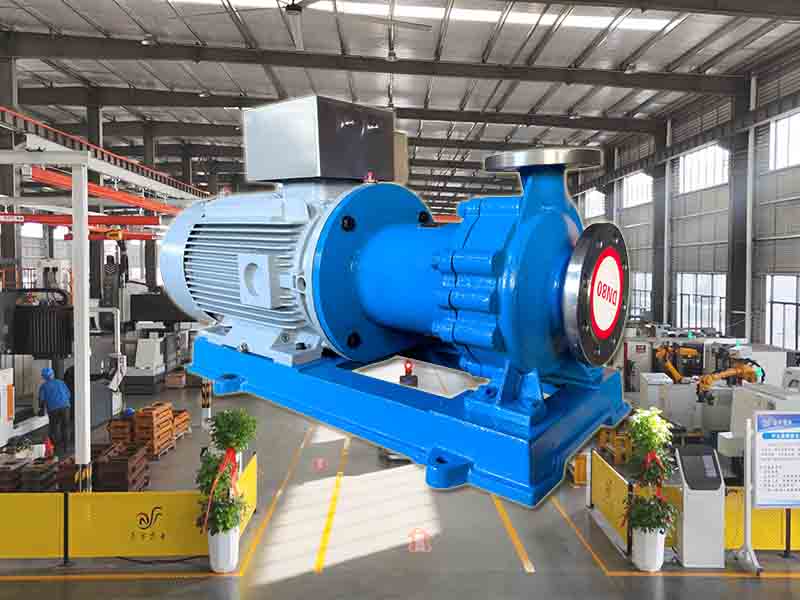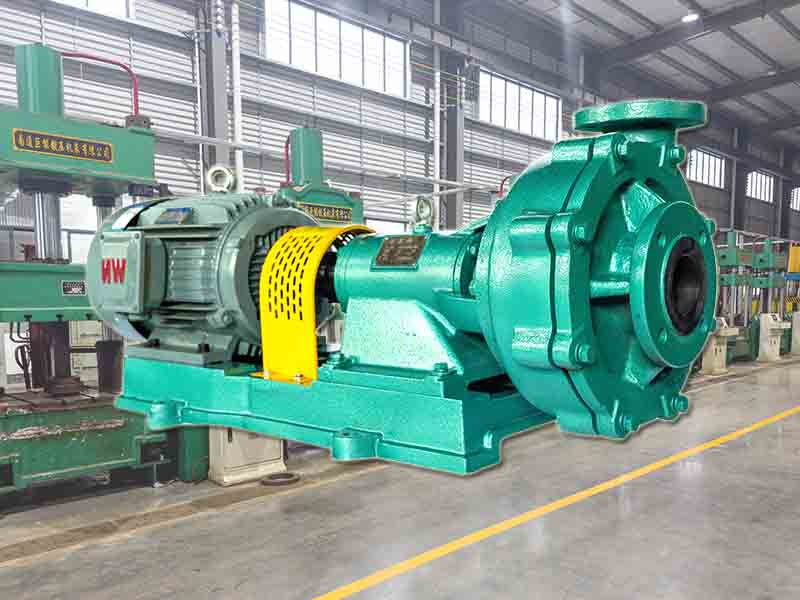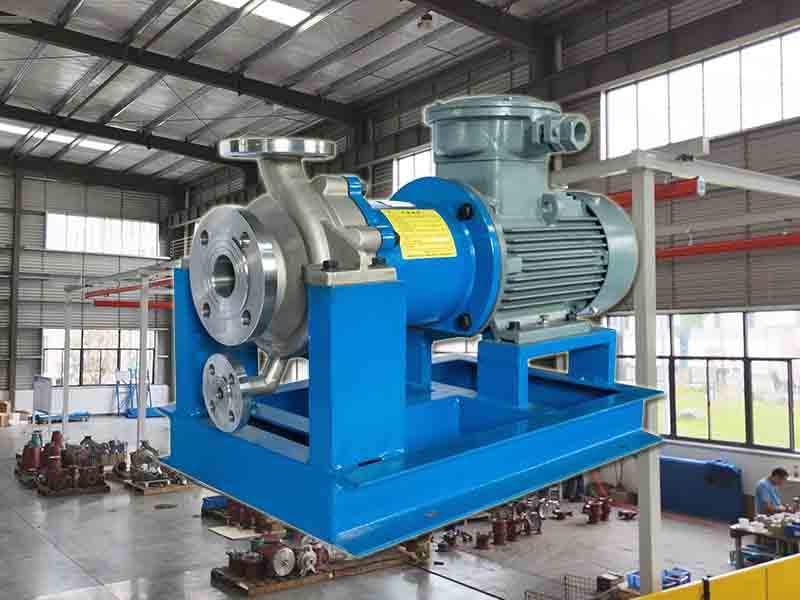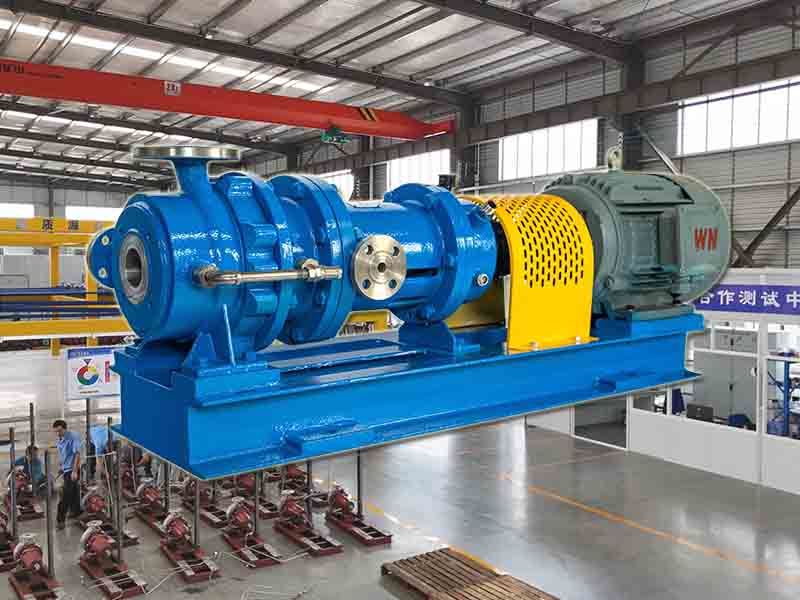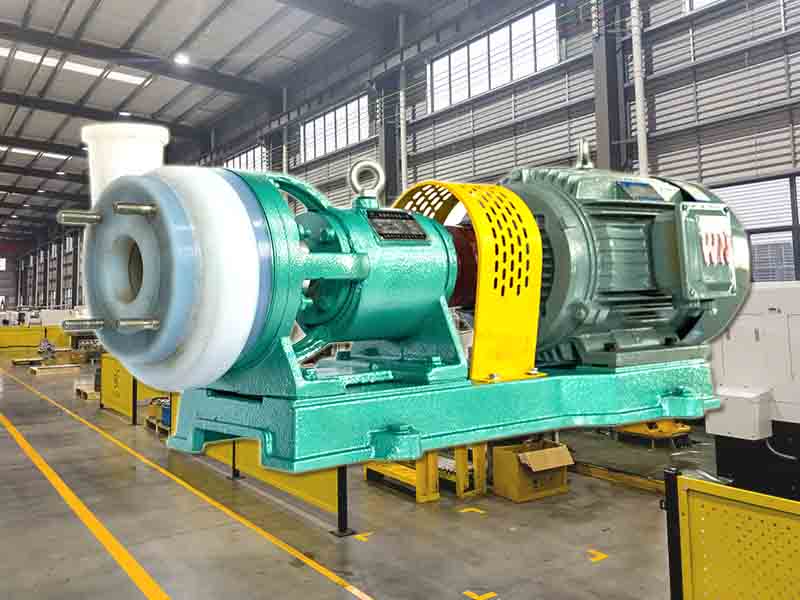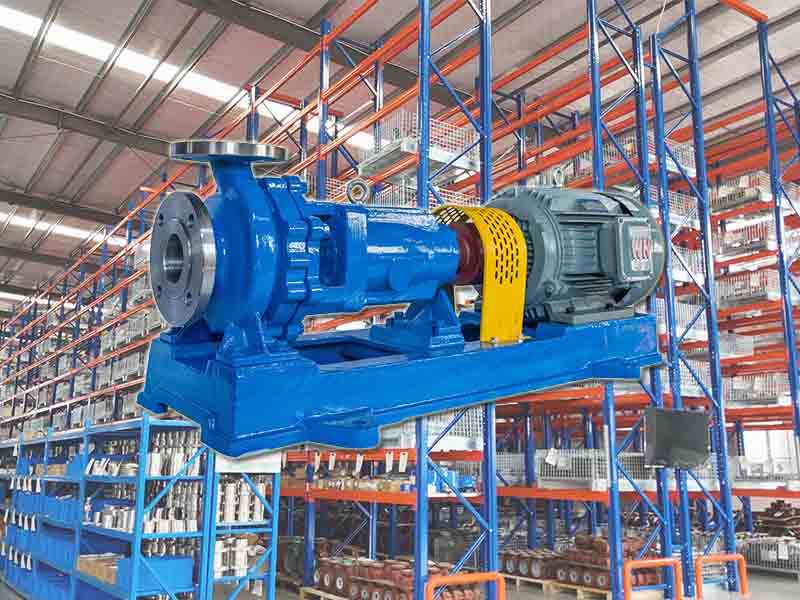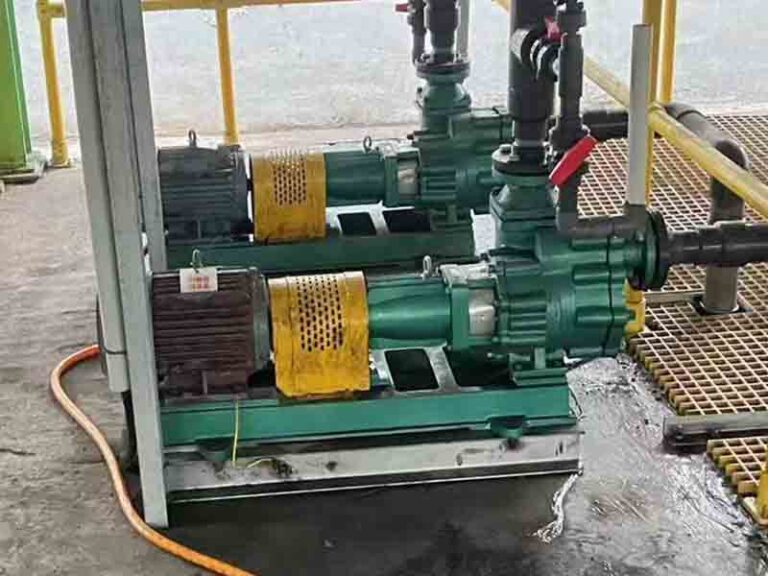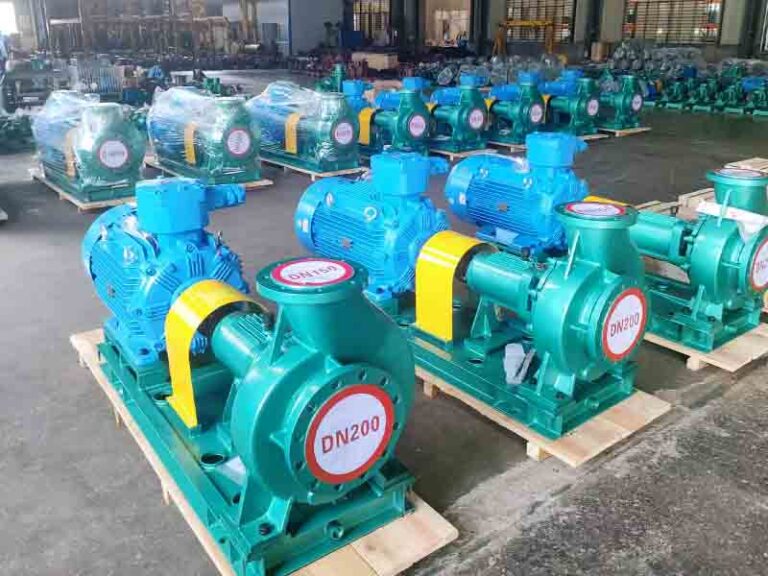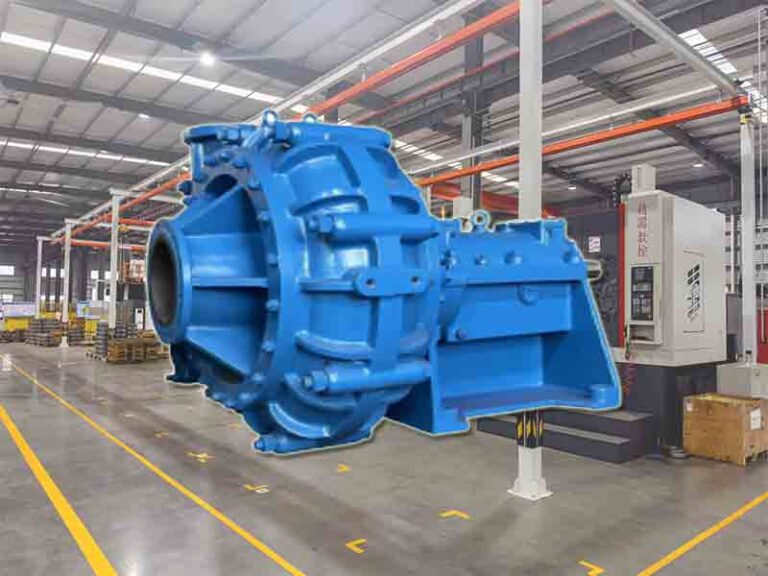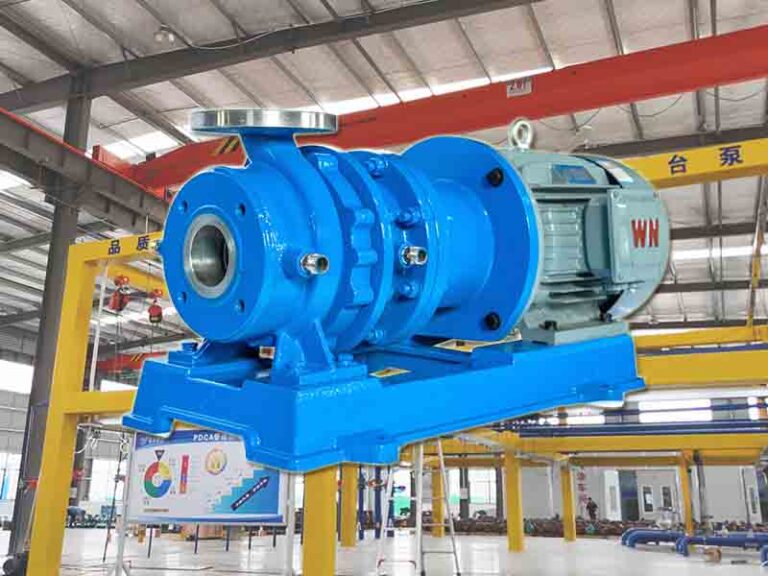In many industrial and commercial fluid handling systems, the demand for flow varies significantly throughout the day. To meet these variable load requirements efficiently, operating centrifugal pumps in parallel has become a popular and practical solution. Whether dealing with chilled water in HVAC systems or chemical transfer in processing plants, parallel pumping offers flexibility, energy savings, and enhanced reliability. This article explores the principles, benefits, limitations, and key considerations when operating pumps in parallel.
What is Parallel Pumping
Running pumps in parallel is a method of sizing and controlling fixed- or variable-speed centrifugal pumps that fits in with the variable load situations that occur in building comfort systems. In most cases, we start with one centrifugal magnetic pump to do most of the work, and then activate the next magnetic centrifugal pump when a higher flow rate is required. Many systems today have one centrifugal pump designed for 100% flow while the other sits idle as a 100% standby pump.
However, when running centrifugal pumps in parallel, the design flow is divided between two or more operating centrifugal chemical pumps. For example, when there are two operating chemical centrifugal pumps, the load will be distributed at 50% – 50%; when there are three operating centrifugal pumps, the load will be distributed at 33% – 33% – 33%, and so on.
Although all centrifugal pumps are sized for a percentage of the design flow, the head of each centrifugal pump remains at 100% of the design head. This is often used when selecting and specifying piping booster systems. If the normal load compared to the design flow rate is very small in the pipeline system using centrifugal pumps selected according to 100% of the design flow rate, it will result in a waste of money and energy, which is the main reason for the use of two or three parallel operation of chemical centrifugal pumps in the pressurization system.
Benefits of Operating Pumps in Parallel
Centrifugal pumps operating in parallel have a number of advantages.
First, parallel chemical pumps can control flow while maintaining a constant head. Second, the system allows centrifugal pumps with different hydraulic characteristics but the same head characteristics to be used together. Third, the parallel centrifugal pump system has a higher reserve capacity than a single centrifugal pump. Fourth, running pumps in parallel helps save energy and money.
Drawbacks of Operating Pumps in Parallel
While parallel centrifugal pump systems are more cost-effective than single centrifugal pump systems, there are many design challenges that must be considered to achieve the desired performance of the system.
One of the main issues is compatibility. The performance curves of chemical pumps running in parallel should be very close, otherwise the system will fail. Even if two identical corrosion-resistant pumps of the same brand and model are used, the performance charts of each centrifugal pump must be compared and calibrated to ensure system reliability and overall energy efficiency. Even if two different explosion-proof pumps can be run in parallel, their heads should be matched within a range of 3 to 4 flow points.
Five Keys to Optimizing Parallel Pumping Systems
Minimize The Number Of Centrifugal Pumps
A parallel system consists of multiple stainless steel centrifugal pumps that share a common inlet and discharge into a common main. As the load increases, additional centrifugal pumps are activated to provide the required flow. Running too many centrifugal pumps to meet system demand is inefficient and reduces reliability. Therefore, it is important to have a control system that activates parallel centrifugal pumps based on demand.
Properly Match Centrifugal Pumps
Ideally, the total head of the acid-resistant pumps in a parallel system should be similar at zero flow (off state) and at the best efficiency flow. This allows the load to be shared evenly when multiple centrifugal pumps are running. If the centrifugal pumps used in parallel in a system have different heads, the acid-resistant centrifugal pump with the higher head may end up doing all the work. This can result in the standby centrifugal pump delivering zero flow to the system, which can lead to centrifugal pump failure. The way to avoid this is to ensure that all corrosion-resistant centrifugal pumps have similar heads when operating at the best efficiency point and when shut down.
Remember That Adding a Centrifugal Pump Does Not Double The Flow Rate
Adding an identical stainless steel explosion-proof centrifugal pump will change the centrifugal pump curve by adding the flow rates of each centrifugal pump at the corresponding total head, but it will not double the system flow rate. If the total head (the sum of static head and friction losses) remains the same (about 100 feet in this example), the pumping capacity will indeed double.
But in fact, as the flow rate increases, the additional friction head will increase the total head to about 120 feet, and the intersection of the system curve and the parallel centrifugal pump performance curve will correspond to a flow rate of 1800 gpm, which is much lower than the flow rate of 3000 gpm. Therefore, adding centrifugal pumps will reduce the flow rate of each centrifugal pump due to the additional friction losses in the system, and may also cause the individual centrifugal pumps to operate less efficiently or require more frequent maintenance.
Parallel Centrifugal Pumps Work Best In Systems Dominated By Static Head
Given the above example of “one plus one does not equal two”, it is not difficult to understand that parallel centrifugal pumps can increase flow the most when used in systems with high static head and minimal pipe friction. The lower the friction, the more flow can be increased when a second leak-free centrifugal pump is activated. Pumping stations and flood control systems are examples of systems where static head dominates, and short, large-diameter pipes are often used to move large volumes of water over short distances, usually over dikes or dams.
Use Variable-Speed Centrifugal Pumps In Parallel Systems
Remember what we said about using identical centrifugal pumps? There are exceptions to every rule. Variable-speed controlled alkali-resistant centrifugal pumps provide flexibility and extend the range within which the system can operate efficiently. During low flow demands, a single centrifugal pump can gradually increase flow until it reaches maximum speed. Once maximum speed is reached, the other centrifugal pumps can be brought online, and the variable-speed centrifugal pump will work like any other fixed-speed centrifugal pump running in parallel. For efficient operation, all centrifugal pumps in the system can be operated at variable speeds, but the control system needs to ensure that the heads of the multiple centrifugal pumps are adequately matched.
Why Use Parallel Pumping
Why bother with parallel operation and start/stop control when it’s easy and energy-efficient to use a single variable speed centrifugal pump sized for the total design flow? There are situations where single centrifugal operation is not the best choice, and here are five examples.
Spare capacity without a spare pump: When a parallel centrifugal pump is shut down or stopped, the running stainless steel acid-resistant centrifugal pumps will run on their own curves, providing a higher flow rate than when sized for the design flow, although not 100%, but it is considerable. If the customer does not require 100% spare capacity and the project budget is important, then parallel operation of centrifugal pumps is a solution.
Initial project cost savings: When parallel centrifugal pumps are selected, the stainless steel alkali-resistant centrifugal pump size will be smaller because the flow rate is only a portion of the total system design flow. Usually each leak-proof centrifugal pump will have less power, which means lower costs. In addition, the piping components of each leak-proof acid-resistant centrifugal pump will be sized for lower flow and smaller pipe diameters, which also means lower costs.
You may never run close to the design flow: Pipeline boosting systems are a good example. Every pipeline engineer knows that the criteria for determining cold water flow are very conservative, and backup pumps are rarely provided in multi-pump boosting systems. Two, three or four centrifugal pumps will run in parallel, and all leak-proof alkali-resistant centrifugal pumps are designed according to the operating status. If the system design is too conservative, parallel operation of centrifugal pumps may be the answer.
The system may be expanded in the future: Customers expect to expand the system in the future, but are not sure when and if it will actually be expanded. Engineers often encounter this situation. Then you can design the system for future parallel operation of centrifugal pumps, reserve space and prepare the foundation for the future installation of corrosion-resistant centrifugal pumps.
The system minimum flow is low: Most corrosion-resistant chemical centrifugal pumps have a minimum flow requirement, and the larger the centrifugal pump, the higher the minimum flow requirement.
Conclusion
Parallel pump operation is not just a matter of adding more pumps—it requires careful planning, hydraulic matching, and control strategy optimization to ensure efficient and reliable system performance. When properly applied, parallel pumping can lead to substantial cost savings, greater system flexibility, and increased operational resilience. Whether you’re designing a new system or upgrading an existing one, understanding the fundamentals of parallel pump operation can help you make smarter decisions and optimize your pumping solutions.

